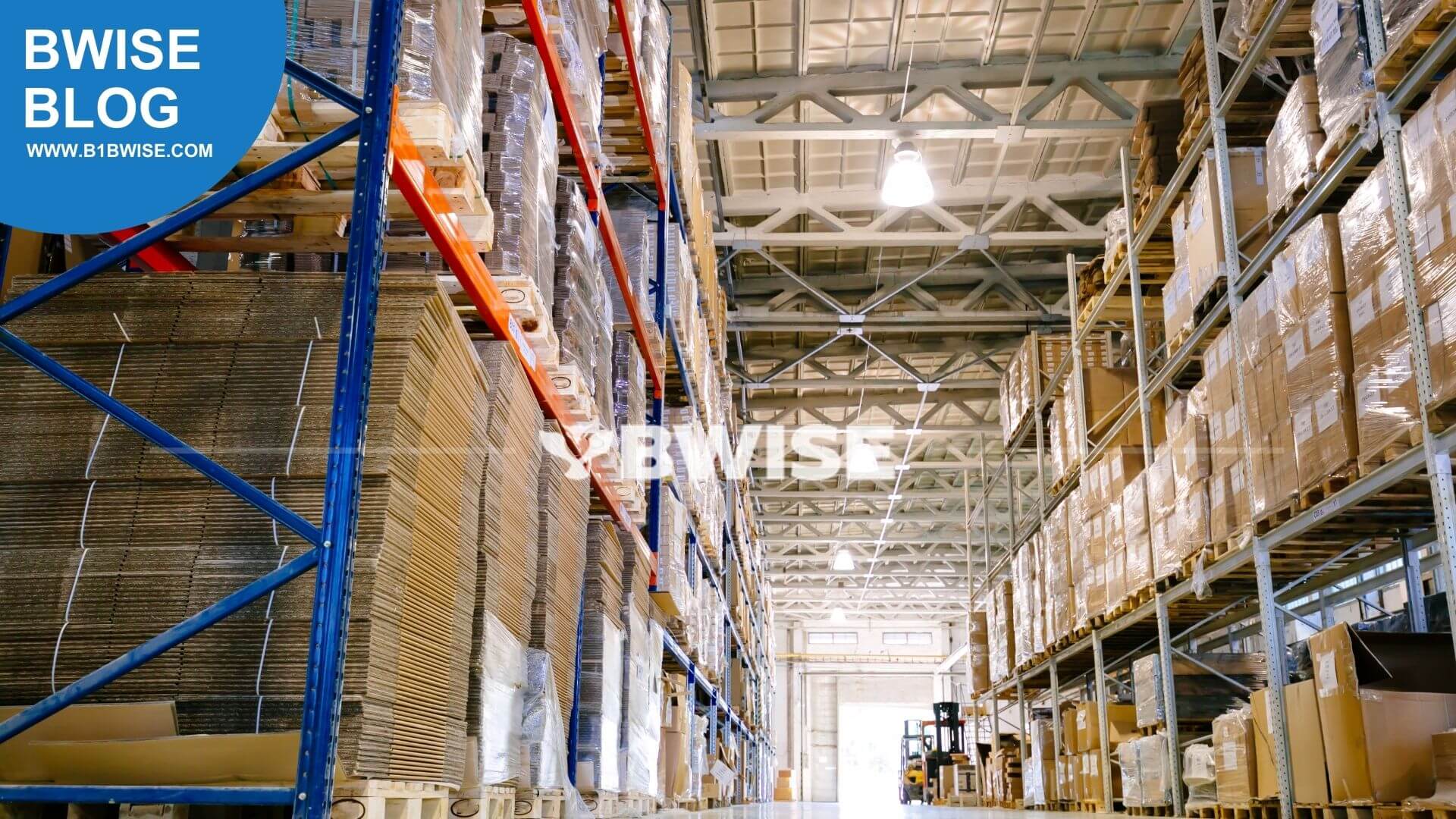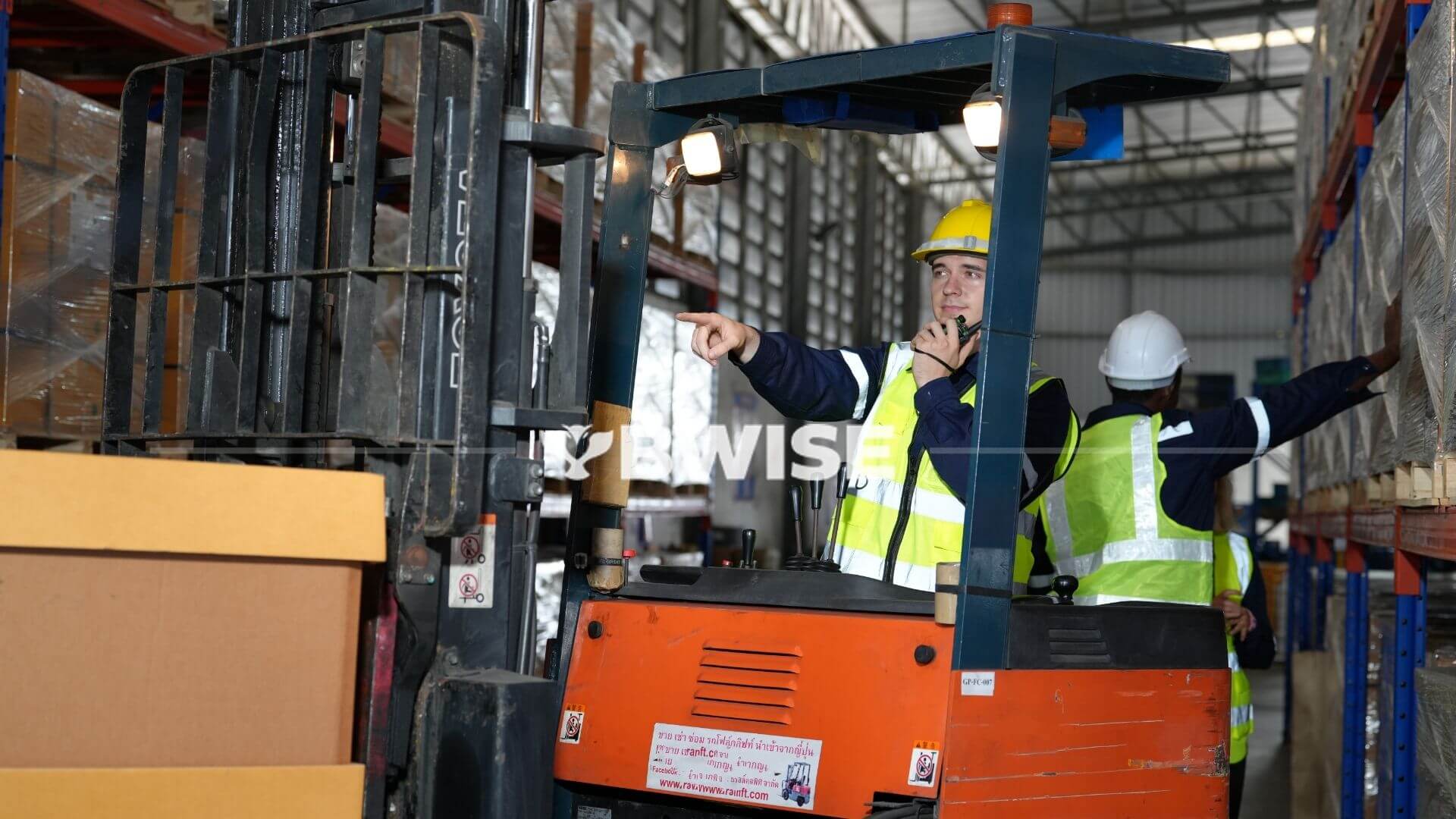
In today’s globalized and fast-paced business environment, efficient supply chain management is crucial to success. Logistics warehouses play a vital role in the efficient storage and distribution of goods, contributing significantly to well-functioning supply chains.
In this section, we will explore the functions and benefits of logistics warehouses, highlighting how they optimize supply chains’ overall performance.
Key Takeaways:
-
- Logistics warehouses are an integral part of supply chains.
- Efficient storage and distribution of goods are essential for smooth business operations.
- Logistics warehouses improve inventory management, order fulfillment, and overall operational efficiency.
- Design and layout considerations are crucial when setting up a logistics warehouse.
- Effective integration with supply chain systems is essential for overall performance.
Topics Discussed:
- What is a Logistics Warehouse?
- Benefits of Utilizing Logistics Warehouses
- Functions of Logistics Warehouses
- Design and Layout Considerations for Logistics Warehouses
- Technology and Automation in Logistics Warehouses
- Integration of Logistics Warehouses with Supply Chain Systems
- Best Practices in Logistics Warehouse Management
- Conclusion
What is a Logistics Warehouse?
A logistics warehouse is a facility designed for the storage, handling, and management of goods as they move through the supply chain. It is an essential component of a well-optimized supply chain that ensures seamless operations across the entire process of moving goods from production to consumption.
Logistics warehouses can vary in shape and size, from small, single-room operations to large, multi-story facilities with high-tech equipment and automation features. Nonetheless, their primary function remains the same: to serve as the central hub for goods as they are received, stored, and dispatched to buyers quickly and efficiently.
Features and Capabilities of a Logistics Warehouse
| Feature | Capability |
| Storage Systems | Provides varied storage options to accommodate different goods, including racking, shelving, and bulk storage. |
| Inventory Management | Uses sophisticated systems and processes to track inventory levels, optimize space utilization, monitor expiration dates, and ensure product availability. |
| Order Fulfillment | Processes orders efficiently and accurately, including picking, packing, and shipping orders to customers or other warehouses or locations. |
| Quality Control | Inspects and tests products to ensure compliance with industry regulations, quality standards, and customer specifications. |
| Material Handling Equipment | Uses specialized handling equipment such as forklifts, conveyors, and cranes to move goods safely and efficiently within the warehouse. |
| Security Systems | Provides advanced systems to secure the warehouse and its contents against theft, damage, and unauthorized access, such as sensors, cameras, and alarms. |
Logistics warehouses are often strategically located at key points in the supply chain, such as transportation hubs or close to major markets or production centers, to minimize transportation costs, reduce delivery times, and ensure efficient distribution.
Overall, logistics warehouses play a critical role in ensuring the seamless functioning of supply chains, optimizing operations, and enhancing customer satisfaction.
Benefits of Utilizing Logistics Warehouses
Logistics warehouses provide significant benefits when incorporated into supply chains. These benefits include:
| Improved Inventory Management | A logistics warehouse enables accurate inventory tracking and management, ensuring that the right products are available at the right time. This minimizes stockouts, overstocking, and inventory holding costs, leading to optimized inventory levels and significant cost savings. |
| Facilitated Order Fulfillment | A logistics warehouse enables faster and more efficient order fulfillment, ensuring that customer orders are processed and shipped as quickly and accurately as possible. This helps increase customer satisfaction and loyalty, while reducing the risks of shipping errors and delays. |
| Enhanced Overall Operational Efficiency | Logistics warehouses provide a single point of control and coordination for all inbound and outbound logistics operations, enabling seamless function and reducing delays. This leads to increased operational efficiency and productivity and better supply chain performance. |
Incorporating logistics warehouses into supply chains is an effective way to optimize supply chain operations and increase profitability while reducing risk.
Functions of Logistics Warehouses
Logistics warehouses serve many functions in the supply chain, playing a crucial role in the efficient and timely movement of goods. Some of the key functions performed by logistics warehouses include:
| Function | Description |
| Receiving | Logistics warehouses receive goods from suppliers, verifying quantities and quality to ensure compliance with purchase orders. |
| Storage | Once goods are received, logistics warehouses store them until they are needed for order fulfillment or transportation. |
| Dispatching | Logistics warehouses dispatch goods to their intended destinations, whether they are retail stores or end customers. |
| Order Processing | Logistics warehouses can also process orders, including picking and packing the necessary items for shipment. |
| Packaging | Logistics warehouses often play a role in packaging goods, ensuring that they are properly oriented and protected during transportation. |
| Quality Control | Finally, logistics warehouses may also conduct quality control checks to ensure that all goods meet the required standards before leaving the warehouse. |
By performing these critical functions, logistics warehouses help ensure that goods are efficiently and accurately moved through the supply chain. This, in turn, helps businesses optimize their operations and deliver high-quality products to customers on time.

Design and Layout Considerations for Logistics Warehouses
Designing and setting up a logistics warehouse requires careful planning and consideration of several factors. A well-designed warehouse should optimize space utilization, while also ensuring the safety and efficiency of operations.
Space Utilization
One of the primary considerations when designing a logistics warehouse is space utilization. The warehouse layout should ensure maximum use of available floor space, while also accommodating the movement of goods and vehicles. This may involve a combination of different storage systems, such as pallet racking, shelving, and mezzanine floors, which can help to minimize wasted space.
Storage Systems
The choice of storage systems depends on the type, size, and volume of goods handled, and the available space in the warehouse. Pallet racking, for instance, is ideal for storing heavy or bulky items, while shelving may be better suited for smaller goods. Automated storage and retrieval systems can also help to optimize storage space and improve efficiency.
Material Handling Equipment
The use of appropriate material handling equipment is crucial for efficient warehouse operations. The choice of equipment depends on the type and volume of goods handled and the available space in the warehouse. Common types of equipment include forklift trucks, pallet jacks, and conveyor belts, among others.
Safety Measures
Safety is a critical consideration in any warehouse, and appropriate measures should be put in place to prevent accidents and injuries. This might include providing appropriate personal protective equipment (PPE), installing safety barriers, and implementing protocols for safe material handling practices. Regular training and safety audits can also help to ensure a safe working environment.
Technology and Automation in Logistics Warehouses
Technology and automation have revolutionized the way logistics warehouses operate. With advanced software and hardware systems, logistics warehouses can now handle high volumes of inventory more efficiently, reducing lead times and human error.
Warehouse Management Systems (WMS)
Warehouse Management Systems are software solutions like BWISE that support the day-to-day operations of logistics warehouses. They offer a centralized platform for managing inventory, orders, shipping, and receiving, enabling real-time tracking of goods and better decision-making.
Robotics
The use of robotics in logistics warehouses has resulted in faster and more accurate order processing, increased productivity, and reduced physical strain on employees. Automated guided vehicles (AGVs) are common in logistics warehouses, using sensors and cartography to navigate and transport items without human intervention.
Internet of Things (IoT)
The Internet of Things refers to the interconnected network of devices and systems that communicate with each other over the internet. In logistics warehouses, IoT devices such as radio-frequency identification (RFID) tags and sensors provide real-time data on inventory levels, temperature, and humidity. This data helps warehouse managers make informed decisions on inventory management and facility design.
Benefits of Technology and Automation in Logistics Warehouses
|
Benefits |
Description |
|
Improved Efficiency |
Automation enables faster and more accurate order processing, resulting in reduced lead times and increased productivity. |
|
Better Inventory Accuracy |
Real-time tracking of inventory using WMS and RFID reduces errors and improves inventory accuracy. |
|
Reduced Labor Costs |
Automation reduces the need for manual labor, resulting in fewer staff and lower labor costs. |
|
Enhanced Safety |
AGVs and other automated systems significantly reduce the risk of mishaps, accidents, and work injuries. |
The integration of technology and automation in logistics warehouses offers significant benefits to logistics companies. By leveraging the power of these advanced systems, companies can streamline operations, reduce costs, and enhance the overall customer experience.
Integration of Logistics Warehouses with Supply Chain Systems
Integrating logistics warehouses with wider supply chain systems is crucial for ensuring the smooth functioning of the entire supply chain. Effective integration allows for improved visibility, coordination, and collaboration, resulting in better overall performance.
With integration, the logistics warehouse can seamlessly synchronize information with other supply chain components like manufacturers, distributors, and retailers. This enables supply chain managers to have a complete overview of the entire process, from inventory to delivery, and allows for quicker decision-making.
Integration can also reduce operational costs by eliminating inefficiencies like duplicative order management and boosting order accuracy by removing the need for manual data entry. By automating processes, supply chain managers can focus on strategic activities that drive business growth.
Overall, successful integration of logistics warehouses with supply chain systems is critical for businesses to stay competitive and optimize their supply chain operations.
Best Practices in Logistics Warehouse Management
Effective management strategies can significantly enhance the performance of logistics warehouses. Key areas to focus on include:
|
Best Practice |
Description |
|
Inventory Control |
Regularly monitor inventory levels to ensure optimal stock levels are maintained, minimizing stockouts or excess inventories. |
|
Picking and Packing Processes |
Optimize picking routes and streamline packing operations to reduce order processing time and eliminate errors. |
|
Staff Training |
Invest in training programs to improve staff skills, enhance their job satisfaction, and increase their efficiency. |
|
Continuous Improvement |
Regularly review and analyze warehouse processes, identify areas for improvement, and implement changes to enhance efficiency and productivity. |
Implementing these best practices can help logistics warehouses improve their operational efficiency, reduce costs, and contribute to a more effective supply chain.
Conclusion
In conclusion, logistics warehouses are critical components of supply chain management. They enable efficient storage, handling, and distribution of goods, contributing to the overall performance of supply chains. With the benefits of improved inventory management, order fulfillment, and operational efficiency, logistics warehouses play a vital role in optimizing supply chains.
Design and layout considerations, technology and automation, and effective integration with supply chain systems are all crucial factors in maximizing the potential of logistics warehouses. Best practices in logistics warehouse management, including inventory control, picking, and packing processes, staff training, and continuous improvement, are also essential for achieving optimal performance.
As supply chains continue to evolve, logistics warehouses will remain essential for seamless operations. By utilizing logistics warehouses strategically, businesses can gain a competitive advantage and enhance their supply chain capabilities.

